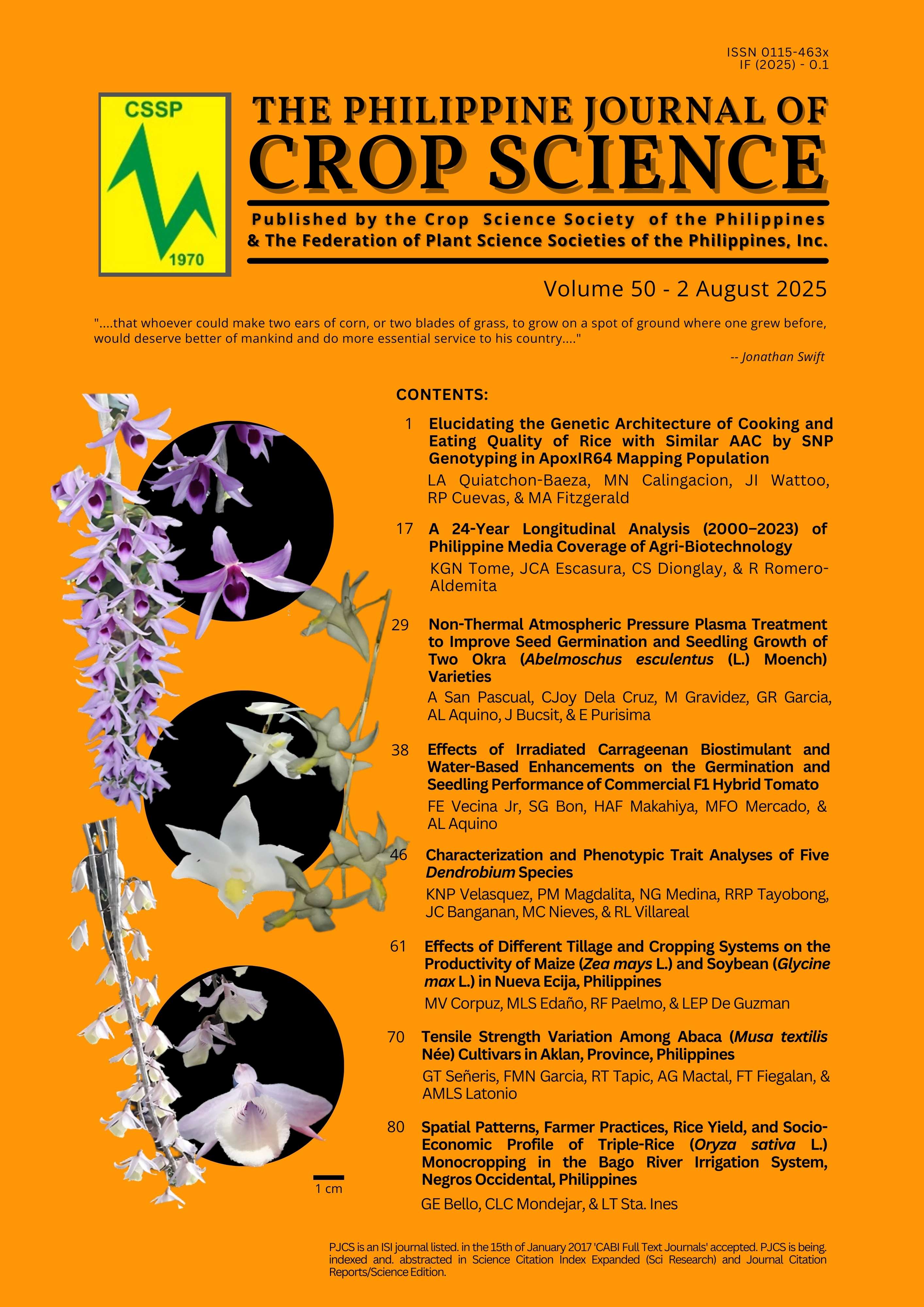Characterization and Phenotypic Trait Analyses of Five Dendrobium Species
Abstract
Phenotyping of 50 Dendrobium genotypes belonging to five Dendrobium species including Dendrobium anosmum (Lindl.), Dendrobium aphyllum (Roxburgh) C.E.C Fisch., Dendrobium crumenatum Swartz, Dendrobium profusum, and Dendrobium bullenianum Rchb.f., and pollen fertility testing of selected D. anosmum genotypes was conducted to characterize and analyze them morphologically in terms of flower, leaf spike traits and growth habit. Principal Component Analysis (PCA) of the different quantitative traits evaluated grouped them into 16 principal components, wherein the first four components have Eigenvalues greater than one and, they have contributed 80.93% of the total cumulative variability. Fifteen phenotypic traits have high variances as shown by the four most important principal components, and these have significance to the different genotypes since they can be used as basis for selection in breeding work to improve the Dendrobium orchid. The relationship of the different quantitative traits was subjected to correlation circle analysis, and it revealed that flower width, flower length, petal length, dorsal and lateral sepal length, lip length, lip width, peduncle length, petal thickness and flower lifespan are positively correlated. Furthermore, Agglomerative hierarchal clustering analysis indicated that the 50 individual Dendrobium genotypes clustered into three classes with different class sizes. The dendrogram showed a highly branched structure indicating a high variability among the 50 Dendrobium genotypes, suggesting a wide window for selection of desirable genotypes. The Dendrobium selections that are floriferous with big flowers included: Genotype #3 from D. anosmum, Genotype #20 from D. aphyllum and Genotype #32 from D. cremenatum.


